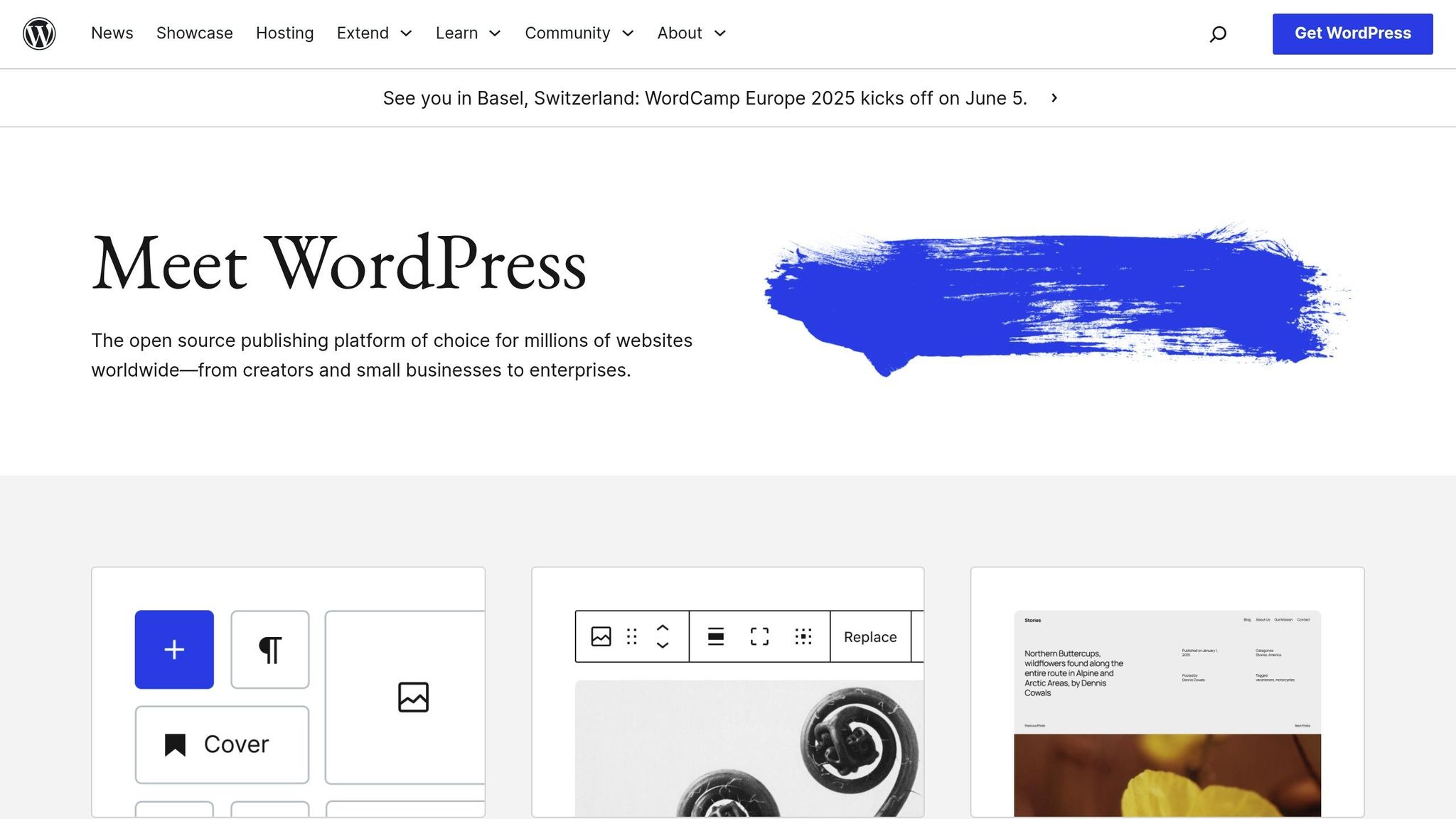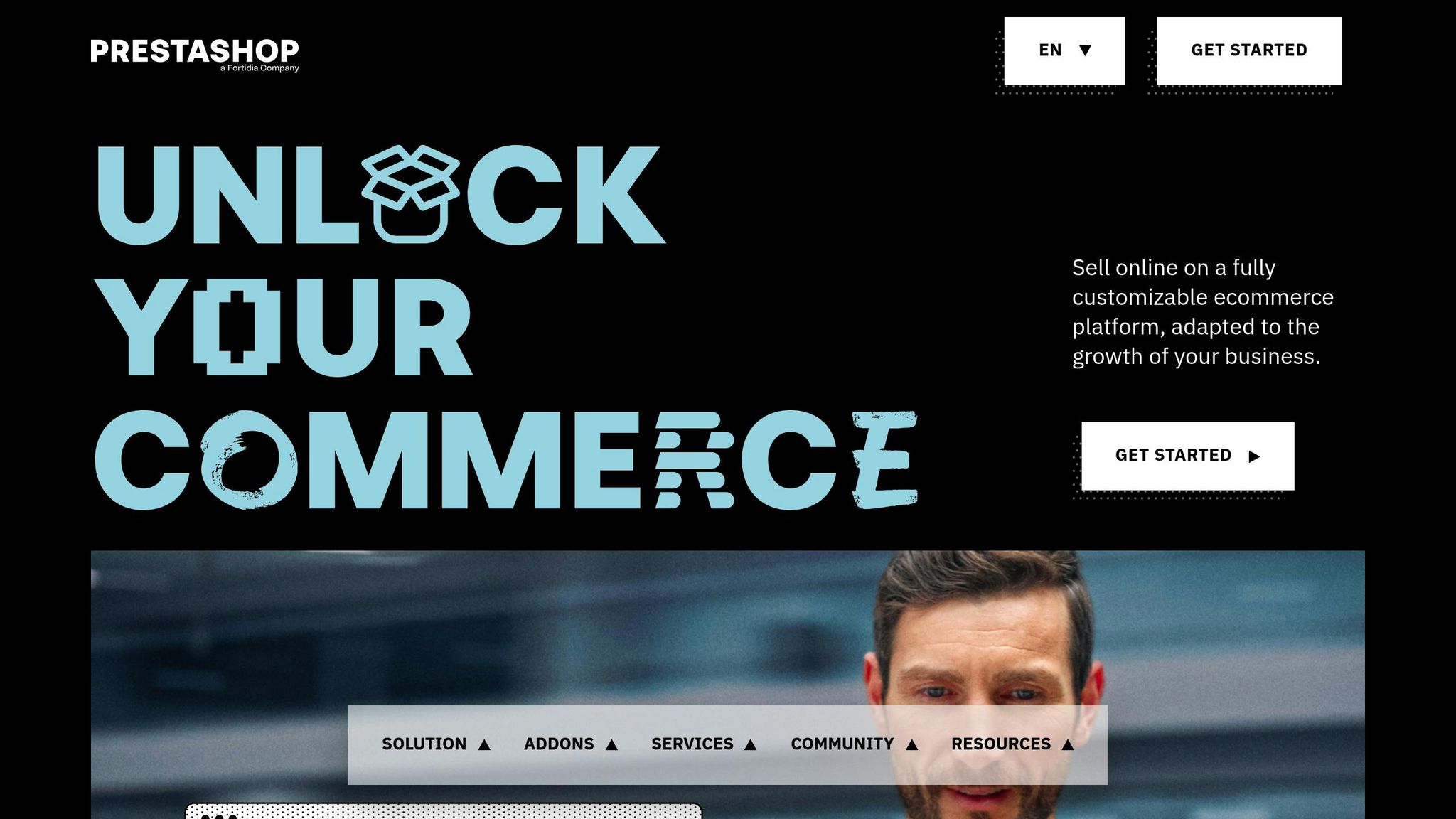
Affordable web design options for startups and SMEs in Switzerland
Affordable web design options for startups and SMEs in Switzerland
Are you a startup or SME in Switzerland looking to create a website without breaking the bank? Here is a summary of affordable and effective options to get you started:
- Typical budget: A showcase site costs between 1,000 CHF and 1,500 CHF, while an online store WooCommerce starts at 3,000 CHF.
- Common solutions:
- WordPress: Ideal for showcase sites (CHF 2,500–6,000).
- PrestaShop: Perfect for online stores (CHF 5,100–9,900).
- Provider options:
- Freelance: CHF 60–120/h, for simple projects.
- Agency: CHF 120–160/h, for custom solutions.
- Large agency: CHF 160–200/h, for complex projects.
- Cost reduction:
- Use template-based designs to save up to 30%.
- Choose shared hosting (CHF 10–50/month).
- Prioritize essential features like and .
Quick platform comparison
| Feature | WordPress (CHF) | PrestaShop (CHF) |
|---|---|---|
| Initial setup | 2,500 – 6,000 | 5,100 – 9,900 |
| Annual hosting | 120 – 600 | 190 – 800 |
| Monthly maintenance | 80 – 300 | 160 – 400 |
| Essential extensions | 200 – 1,000 | 300 – 1,500 |
Tip: Start with a simple site and evolve as needed. Adhere to Swiss laws (data protection, price display) and adapt your site to local languages (German, French, Italian).
With these solutions, you can maximize your online visibility while staying within your budget.
The price of creating a website - Web Agency
Basic principles of managing web design costs
In the quest for affordable solutions, it is essential to master the basics to effectively manage web design costs. In Switzerland, this requires a strategic approach and rigorous budget management.
Defining clear web objectives
Web success often relies on its alignment with well-defined objectives. A recent study highlights this essential link. To maximize your investment, here are some key steps:
- Identify your priorities: Focus on the main business objectives.
- Set up performance indicators (KPIs): They will help you measure progress.
- Analyze expected impact: Evaluate how your site can contribute to your business results.
Once these foundations are laid, it is equally crucial to consider the relationship between cost and quality.
Cost-quality compromise
To control expenses while achieving satisfactory results, it is essential to carefully evaluate providers. Here is an overview of the options available in Switzerland:
| Provider type | Hourly rate (CHF) | Strengths |
|---|---|---|
| Freelance | 60–120 | Competitive rates, direct relationship |
| SME Agency | 120–160 | Diverse team, tailored resources |
| Large agency | 160–200 | Comprehensive solutions, full support |
These rates reflect not only quality but also local expertise. A good strategy is to start with essential features while planning for future developments based on your needs.
Swiss market requirements
Once your objectives are clarified and cost-quality compromises evaluated, it is imperative to adapt your project to the specificities of the Swiss market. Here are two essential points to consider:
Multilingual aspects
- Integrate German, French, and Italian to reach a wider audience.
- Ensure the user interface easily adapts to different languages.
- Use professional translations to ensure content quality.
Legal compliance
- Comply with the Federal Act on Unfair Competition (LCD).
- Display prices in CHF, including VAT, for full transparency.
- Protect user data in accordance with the revised Data Protection Act (FDPA).
In 2023, e-commerce in Switzerland generated 14 billion CHF, with approximately 25% of B2C purchases coming from abroad.
“The Swiss government's goal is to develop a coordinated approach with all stakeholders that respects human rights, democracy, and the rule of law, while promoting Switzerland's innovation and growth capacity.”
To maximize your site's impact, focus on essential features from the start while remaining flexible to incorporate improvements in the future.
Economical web tools
To maximize your budget, let's explore which economical web solutions are best suited for Swiss startups and SMEs.
WordPress setup WordPress

WordPress is an accessible option for Swiss businesses. Here is an estimate of associated costs:
| Element | Monthly cost (in CHF) | Details |
|---|---|---|
| Hosting | 10 – 50 | Depends on traffic volume |
| Premium theme | 8 – 40 | Annual payment required |
| Essential extensions | 15 – 80 | Includes tools for security, SEO, etc. |
| Maintenance | 80 – 300 | Covers updates and backups |
Developing a showcase site generally costs between CHF 2,500 and CHF 6,000. This solution has already proven successful in many real-world examples.
Setting up PrestaShop

For businesses looking to venture into e-commerce, PrestaShop is a relevant alternative. Here is an overview of costs:
1. Technical infrastructure
Hosting starts at CHF 15.90 per month (excluding VAT).
2. E-commerce features
For a complete online store, budget between CHF 5,100 and CHF 9,900. This amount includes:
- Initial setup and configuration
- Integration of payment systems
- Product catalog setup
- Multilingual settings for online commerce
Comparative cost analysis
Here is a cost comparison to help you choose the platform best suited to your budget strategy:
| Feature | WordPress (CHF) | PrestaShop (CHF) |
|---|---|---|
| Initial setup | 2,500 – 6,000 | 5,100 – 9,900 |
| Annual hosting | 120 – 600 | 190 – 800 |
| Monthly maintenance | 80 – 300 | 160 – 400 |
| Essential extensions | 200 – 1,000 | 300 – 1,500 |
These data allow you to choose a solution that aligns with your priorities and digital objectives while staying within your budget.
Cost reduction methods
Template-based design
Template-based design can reduce development costs by up to 30%. This method offers several advantages such as shortened development time, simpler maintenance, better adaptation through , and automatic performance optimization.
Once development costs are reduced, it is essential to consider how to optimize expenses related to hosting and maintenance.
Hosting and maintenance
- Hosting choice
In Switzerland, maintaining a typically represents 15 to 20% of the initial development cost. To limit these expenses, opt for advantageous annual packages, tailored to your needs, and take advantage of free CDN services.
These optimizations free up resources to focus on key features, which we address in the next section.
Selection of essential features
A mobile-optimized site can increase sales by 25%. Essential elements of a high-performing site include a mobile-responsive interface, intuitive navigation, , social media integration, and analytics tools to track performance.
Take the example of a local bakery in Switzerland: in August 2024, after refocusing its site on these essential features, it saw online orders soar by 40%.
This example shows that a targeted approach to fundamental needs can not only minimize initial costs but also lay the groundwork for future improvements.
Examples of Swiss companies
In Switzerland, several companies illustrate how rigorous cost management can optimize their online presence. Here are some concrete examples showing how well-thought-out strategies can generate impressive results.
CRM site of a Geneva startup
The Geneva startup OUF.app, specializing in entrepreneurial solutions, collaborated with LANE Digital to develop a high-performance . This site, designed to be both intuitive and search engine optimized, integrates essential features while remaining flexible with a modular structure. This approach allows for feature additions over time, based on priorities and available resources.
Online store of a Vaud SME
The Vaud SME Mix-Image demonstrated how a pragmatic approach can lead to rapid results. During the COVID-19 pandemic, the company launched an online store offering over 10,000 pop-culture-related products in less than two months. By choosing the WooCommerce platform on WordPress, Mix-Image managed to launch an evolving project while adhering to strict budget constraints.
Results over 24 months
The efforts made by these Swiss companies show impressive long-term results. For example, domo.health, a Swiss company specializing in HealthTech, saw its traffic increase by 300% after redesigning its e-commerce platform. This success illustrates that careful planning and strategic feature selection can help develop a professional and effective online presence, even with limited financial resources.
sbb-itb-454261f
Summary
In Switzerland, creating a professional website does not necessarily require a huge budget. Startups and SMEs now have access to many solutions to build an effective online presence while maintaining strict control over their expenses.
Here is an overview of typical budgets based on the scope of your project:
| Phase | Estimated budget | Essential elements |
|---|---|---|
| Showcase site | CHF 1,000 – 1,500 | Responsive design, main pages, contact form |
| Standard SME | CHF 2,500 – 6,000 | WordPress CMS, blog, basic SEO |
| E-commerce | CHF 3,000 – 6,000 | WooCommerce, product catalog, secure payment |
These budget ranges allow for adaptation to the size and ambitions of your project. However, to maximize your results, focus on these key aspects:
- Mobile optimization: With a mobile connection rate reaching 122% in Switzerland, a smartphone-adapted site is essential.
- Compliance with nFADP: Ensure your site meets the requirements of the new Federal Data Protection Act.
- Local SEO: Strengthen your visibility with the Swiss audience.
- Local hosting: Choosing servers based in Switzerland ensures optimal performance and greater reliability.
The experience of many Swiss projects proves that this structured approach is effective. Before you start, take the time to write a detailed specification. This will help you identify your priorities, optimize your expenses, and ensure the creation of a professional and high-performing website.
FAQs
What are the strengths and limitations of an SME agency compared to a freelance for creating my website?
SME agency or freelance: which choice for your website?
Deciding between an SME agency and a freelance for creating your website depends mainly on your priorities and budget.
SME agencies have diverse and specialized teams, allowing for comprehensive service and well-structured project management. This type of collaboration is particularly suitable for complex projects or those requiring long-term follow-up. However, these advantages come at a cost: their rates are often higher, mainly due to their overhead expenses.
On the other hand, freelancers